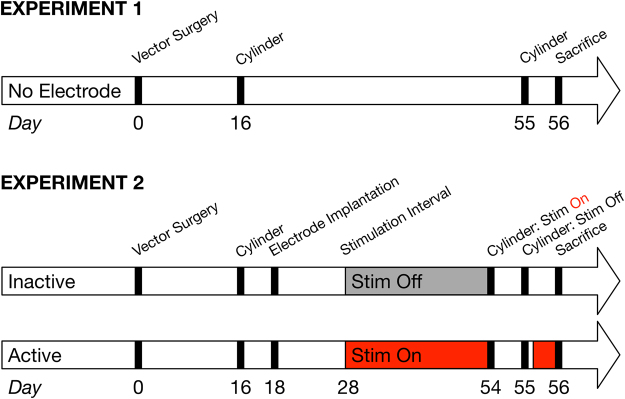Figure 1.
Experimental Design. Rats in Experiment 1 (n = 5) underwent intranigral administration of viral vector and were assessed using the cylinder task at 16 and 55 days after surgery. Rats in Experiment 2 (n = 12) underwent the same viral vector surgery and cylinder testing at Day 16 as in Experiment 1, but on Day 18 were implanted with an electrode in the STN. Rats were randomly assigned to receive continuous stimulation through Day 54 (‘Active’, n = 6) or to not have the electrode activated (‘Inactive’, n = 6). On Day 54, the cylinder task was conducted, and afterward, stimulation was ceased for 24 hours for forelimb asymmetry examination in the stimulation ‘off’ state at Day 55. After the cylinder task was completed on Day 55, stimulation was restarted for Active rats and continued until sacrifice. All rats in Experiments 1 and 2 were sacrificed on Day 56.

